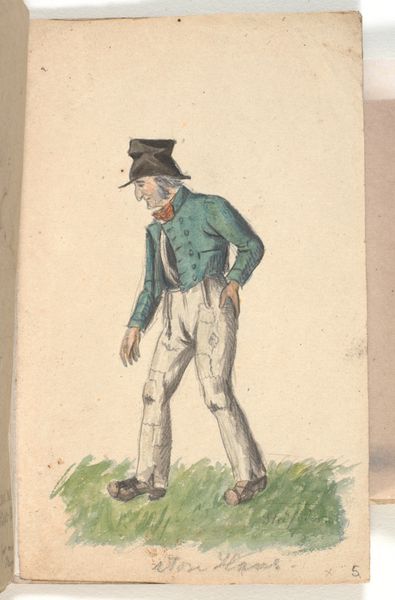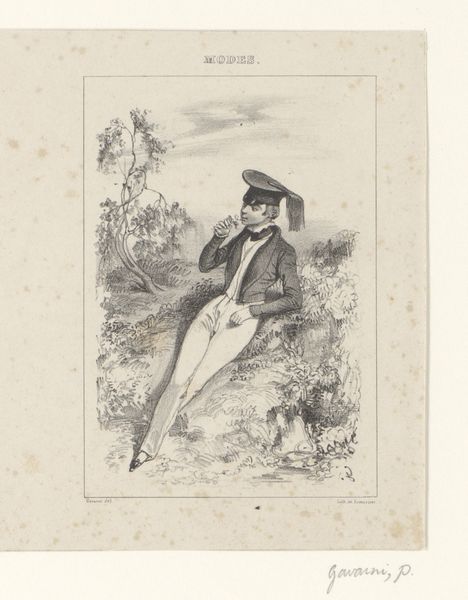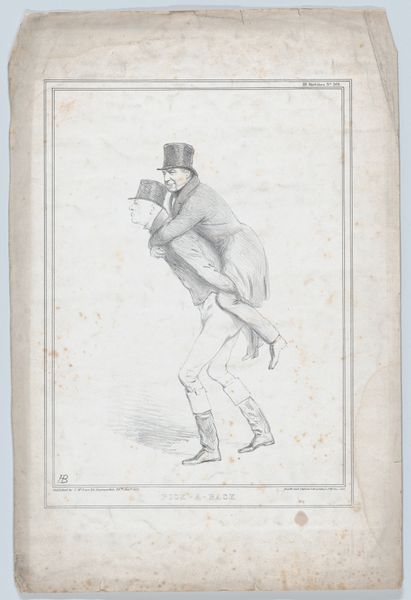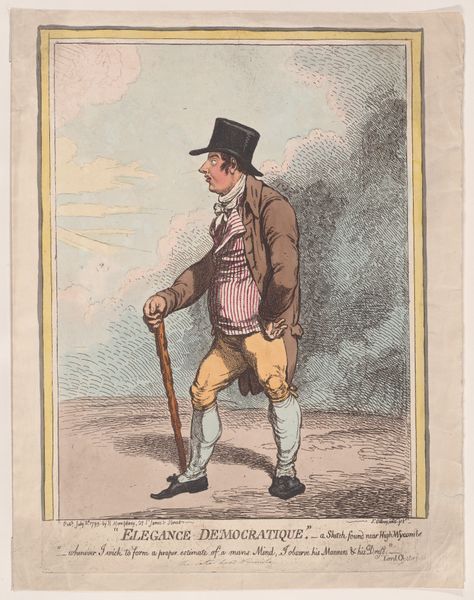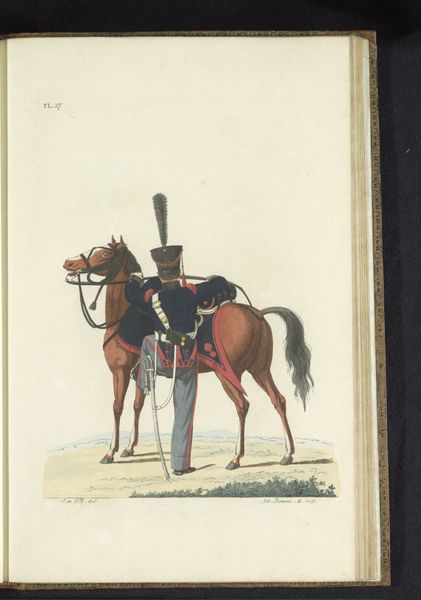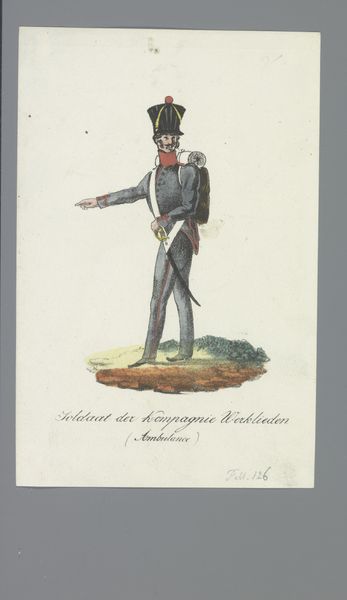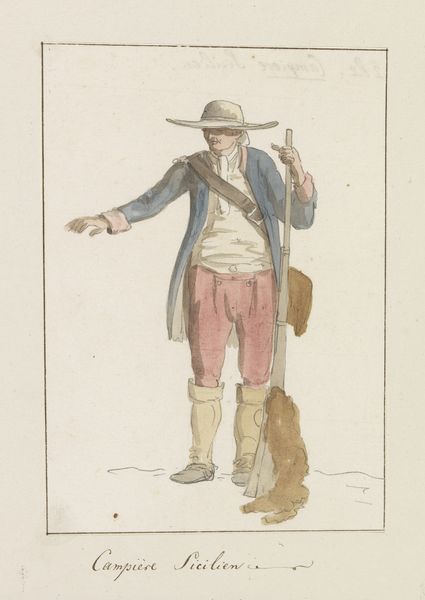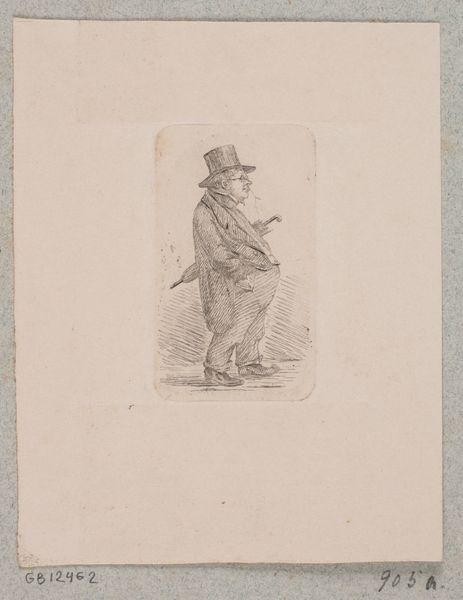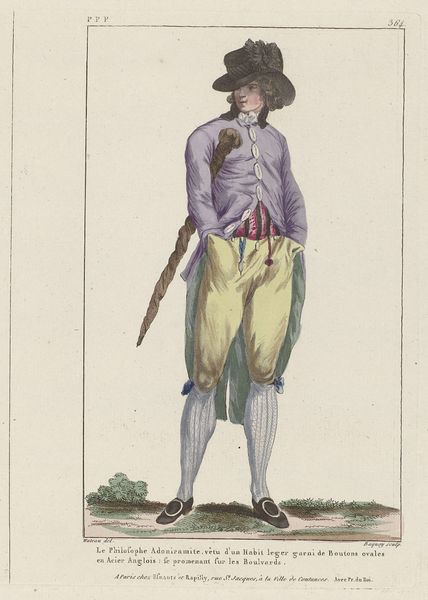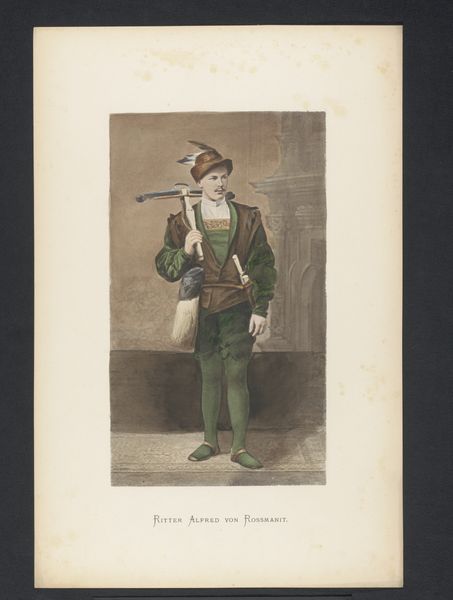
En mand på bare fødder med en pose under armen og en stav i hånden. 1826 - 1829
0:00
0:00
drawing, coloured-pencil, watercolor
#
portrait
#
drawing
#
coloured-pencil
#
water colours
#
watercolor
#
coloured pencil
#
romanticism
#
genre-painting
Dimensions: 167 mm (height) x 103 mm (width) (bladmaal)
Curator: Immediately I’m drawn to the humility of this piece, this depiction of a man so plainly rendered. It speaks to a certain starkness, a realness. Editor: Here we have P.C. Skovgaard’s “En mand på bare fødder med en pose under armen og en stav i hånden," created sometime between 1826 and 1829. The title translates to "A man on bare feet with a bag under his arm and a staff in his hand". Skovgaard employed colored pencils and watercolors for this drawing, which currently resides at the SMK, the National Gallery of Denmark. Curator: There’s something compelling in the simplicity of his attire, juxtaposed with what appears to be a distinct weariness etched into his face. It invites a discussion around class and the visibility, or lack thereof, of the working class in art during that period. How does it intersect with representations of poverty and labor? Editor: Precisely. We have to contextualize this within the Romantic movement, understanding Skovgaard’s artistic choices in relation to the socio-political climate. He seems less interested in idealization and more concerned with representing an unvarnished truth about Danish rural life. Was this to invoke sympathy? Social reform? Curator: It might be too simple to assume any singular motivation. I see threads of feminist theory at play as well – examining the gaze through which this man is portrayed, how it shapes our understanding of his humanity. The artwork does, to some extent, encourage that kind of intersectional understanding. Editor: And it brings up questions about how artistic institutions shape what we value historically, who is seen and unseen, how art itself might play into the normalization or critique of certain social structures. This drawing feels deceptively simple, when it opens into many paths for socio-political understanding. Curator: Yes, and perhaps its quiet power lies in its very restraint. Thank you, a perspective both broadening and yet somehow focusing my awareness. Editor: Likewise. There’s a lot to think about regarding the cultural forces operating even within what seems like a straightforward sketch.
Comments
No comments
Be the first to comment and join the conversation on the ultimate creative platform.
